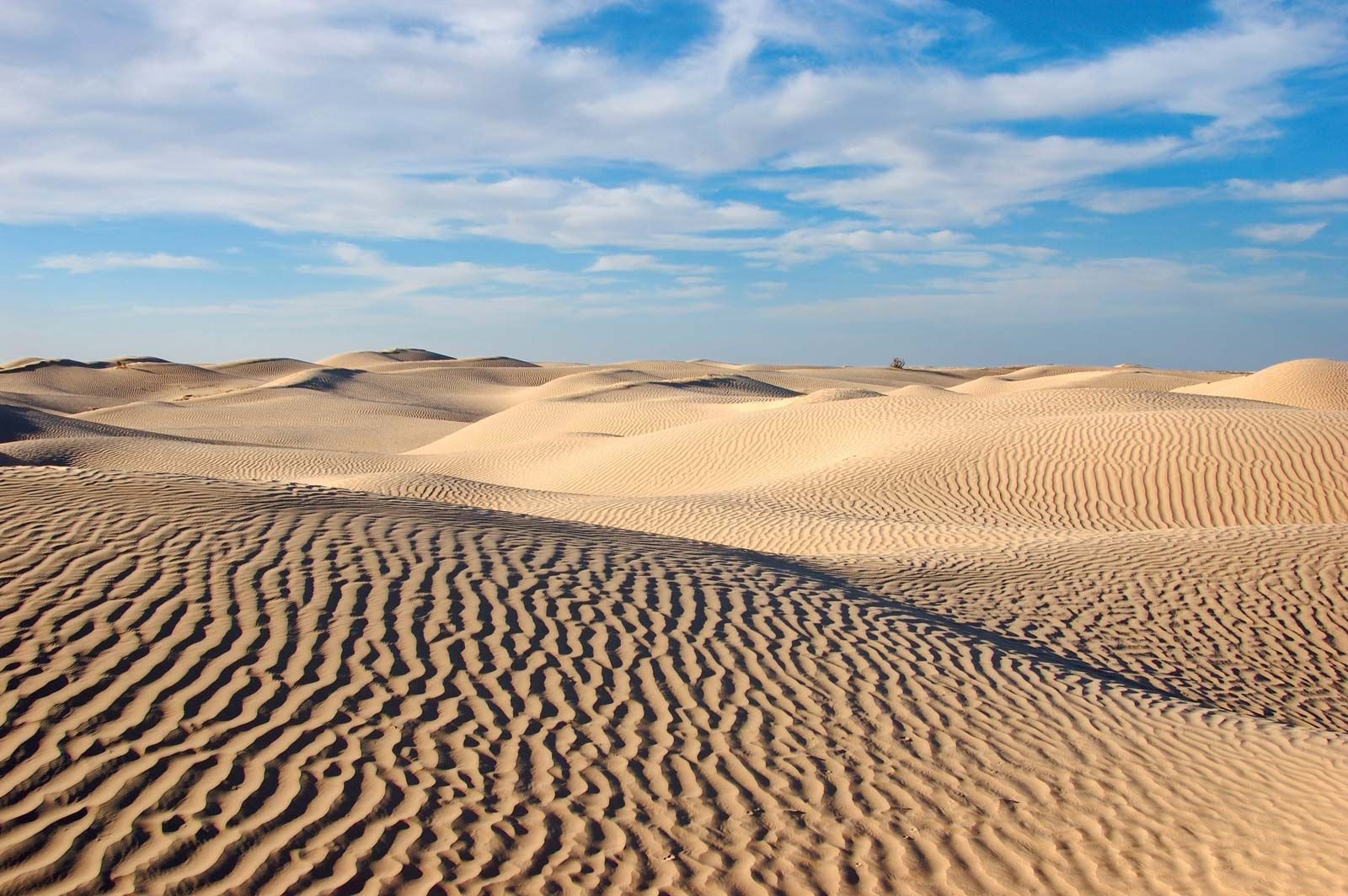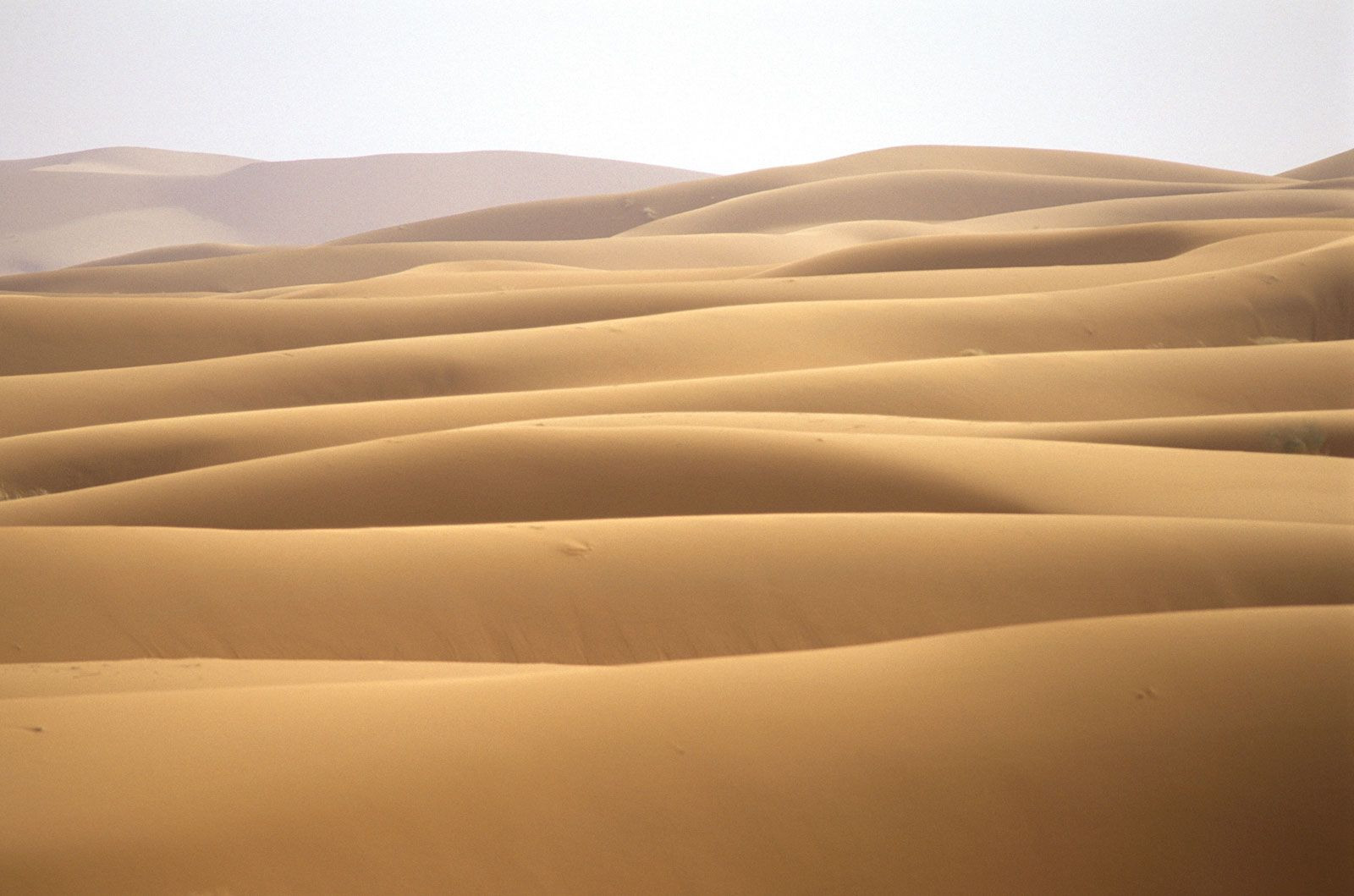The Sahara Desert, a name synonymous with endless sand and scorching sun, evokes images of remote and inaccessible landscapes. But where is the Sahara Desert actually located? Spanning across a significant portion of North Africa, the Sahara is not just a single, monolithic entity but a vast and diverse geographical area with distinct features. Understanding its location is key to appreciating its unique characteristics and global significance.
Vast expanse of the Sahara Desert landscape, showcasing its arid and seemingly endless terrain.
The Sahara blankets a significant section of North Africa, stretching across numerous countries. To pinpoint where the Sahara Desert is, it encompasses parts of Algeria, Chad, Egypt, Libya, Mali, Mauritania, Morocco, Niger, Sudan, and Tunisia. This immense desert is bordered by the Atlantic Ocean on the west, the Atlas Mountains and the Mediterranean Sea to the north, the Red Sea to the east, and the Sahel region to the south. Its sheer size is staggering, covering an area roughly comparable to the entire continent of Europe or the contiguous United States, making it the world’s largest hot desert.
Typical Sahara Desert scenery in Morocco, illustrating the arid environment and sparse vegetation.
The topography of where the Sahara Desert is situated is far from uniform. It presents a varied landscape characterized by shallow basins, some of which are seasonally flooded, known as chotts and dayas. Large oasis depressions also punctuate the landscape, providing crucial water sources in this arid environment. Extensive gravel plains, referred to as serirs or regs, stretch across vast areas, while rock-strewn plateaus, called hammadas, rise in other parts. Abrupt mountain ranges break the monotony of the plains, and significant portions are covered by sand sheets, dunes, and expansive sand seas known as ergs. Within this diverse landscape, the highest point is Mount Koussi in the Tibesti Mountains of Chad, towering at 11,204 feet (3,415 meters). Conversely, the Qattara Depression in Egypt plunges to the lowest point, 436 feet (133 meters) below sea level, highlighting the dramatic variations in elevation across the Sahara.
The very name “Sahara” provides a clue to where this desert is and its nature. Originating from the Arabic word á¹£aḥrÄʾ, meaning desert, and its plural form á¹£aḥÄrÄʾ, it linguistically reinforces the essence of this region. Related to the Arabic adjective aṣḥar, which signifies desert-like and evokes the reddish hue of its barren plains, the name itself is deeply connected to the landscape. Interestingly, indigenous populations have their own names for specific areas within where the Sahara Desert lies, such as the Tanezrouft region in Algeria and the Ténéré in Niger, often rooted in Berber languages, reflecting the long history and local understanding of this immense desert.
The Ahaggar Plateau in southern Algeria, a mountainous region within the Sahara Desert, showcasing its diverse topography beyond just sand dunes.
Geologically, the area where the Sahara Desert is located sits upon the African Shield, a foundation of ancient Precambrian rocks that have been heavily folded and eroded over millennia. The stability of this shield has preserved Paleozoic formations in a horizontal and relatively undisturbed state. Mesozoic deposits, including limestones and Nubian sandstones, overlie these older formations across much of the Sahara. These Mesozoic layers are significant as they hold important regional aquifers, particularly in the northern Sahara, where basins and depressions extend from western Egypt to Algeria. In the southern Sahara, the African Shield’s downwarping created large basins that once held vast Cenozoic lakes and seas, such as the ancient Mega-Chad. The gravel plains (serirs and regs) are thought to be Cenozoic depositional surfaces, while the plateaus, like Algeria’s Tademaït Plateau, are typically covered in angular, weathered rock. Volcanic massifs, such as the Tibesti and Ahaggar mountains, dramatically interrupt the plains and plateaus in the central Sahara, adding to the topographical complexity of the Sahara Desert’s location.
Iconic sand dunes in the Moroccan Sahara, representing the quintessential image of this vast desert.
Sand formations, including sand sheets and dunes, are a defining feature of where the Sahara Desert is. They cover approximately 25% of its surface, contributing significantly to its desert landscape. Various types of dunes are found, from tied dunes forming near obstacles to crescent-shaped barchans and massive, complex sand seas (ergs). Some pyramidal dunes reach heights of nearly 500 feet, while the mountainous sand ridges of the ergs, known as draa, can soar to 1,000 feet. Adding to the desert’s mystique is the phenomenon of “singing” or booming sands, a still not fully understood occurrence associated with these sand formations, highlighting the many wonders hidden within the location of the Sahara Desert.
In conclusion, the Sahara Desert’s location is firmly rooted in North Africa, stretching across a multitude of countries and exhibiting a remarkable diversity in its geographical and geological features. From towering mountains to below-sea-level depressions, gravel plains to colossal sand dunes, the Sahara is far more than just a sea of sand. Its location on the African continent has shaped its climate, geology, and ultimately, its unique identity as the world’s largest hot desert.


 sand dunes
sand dunes